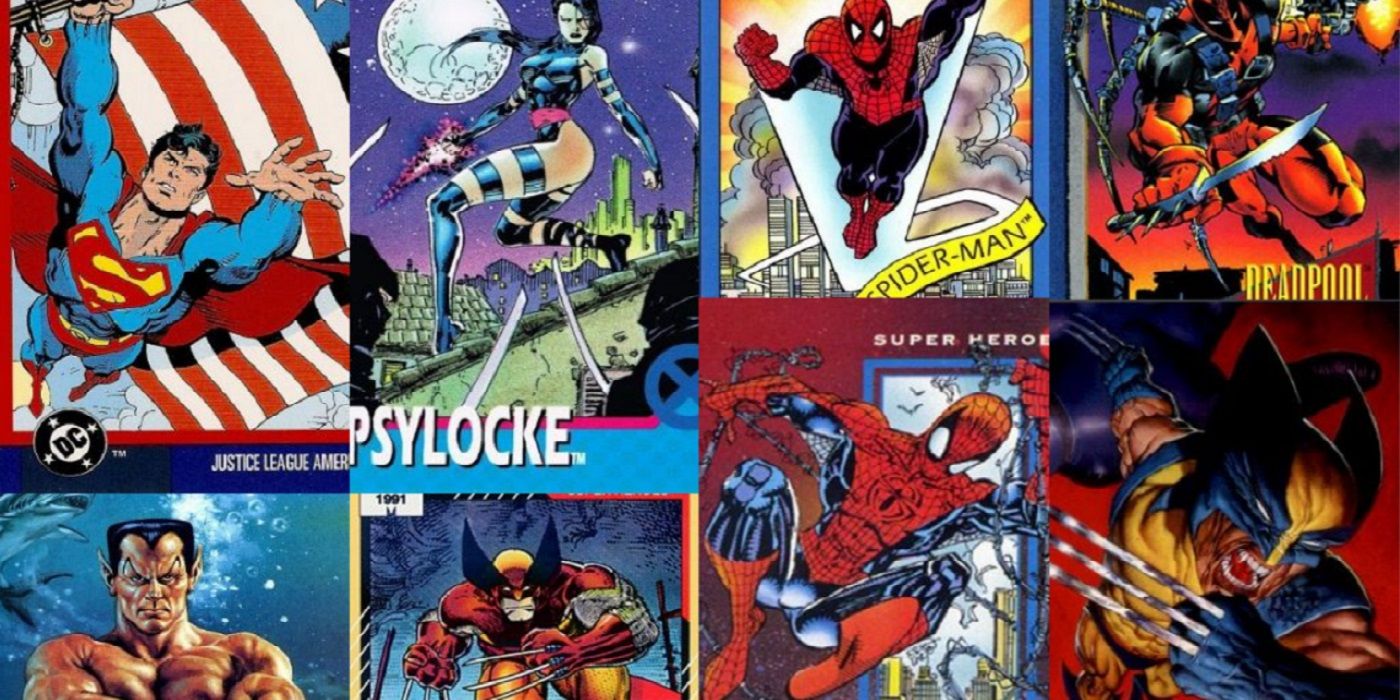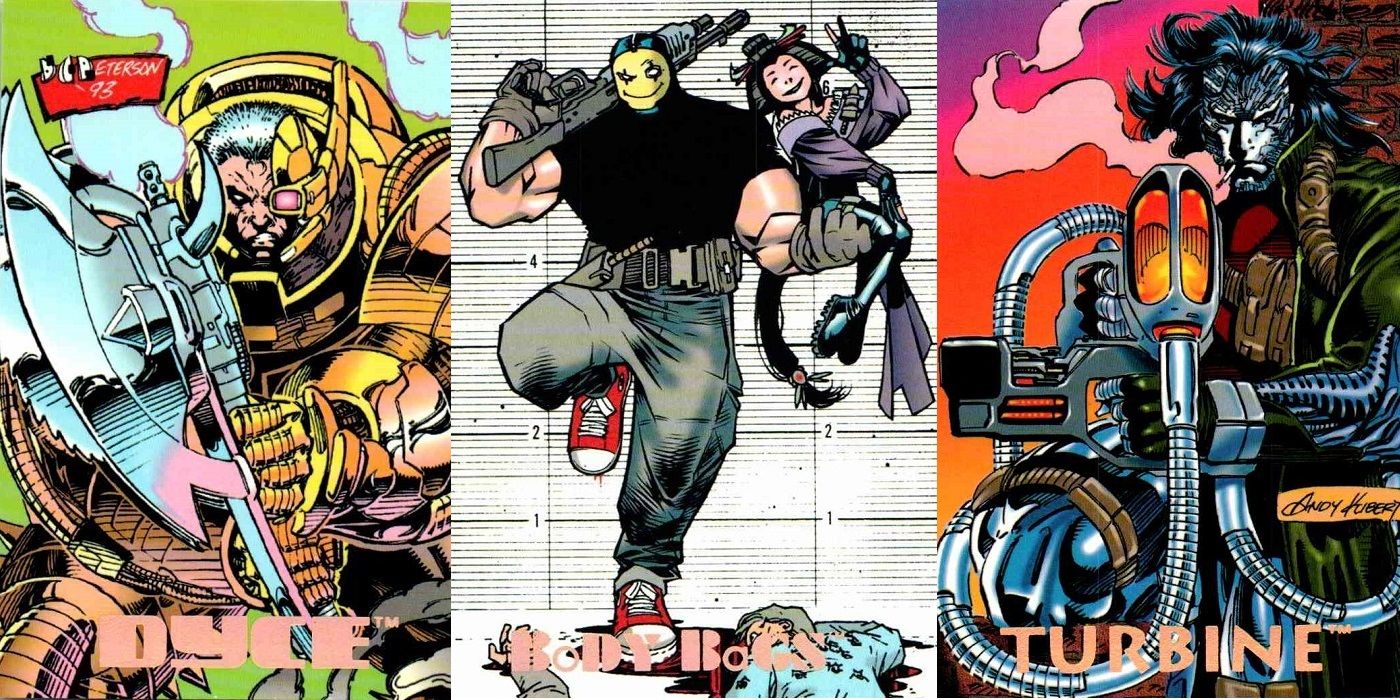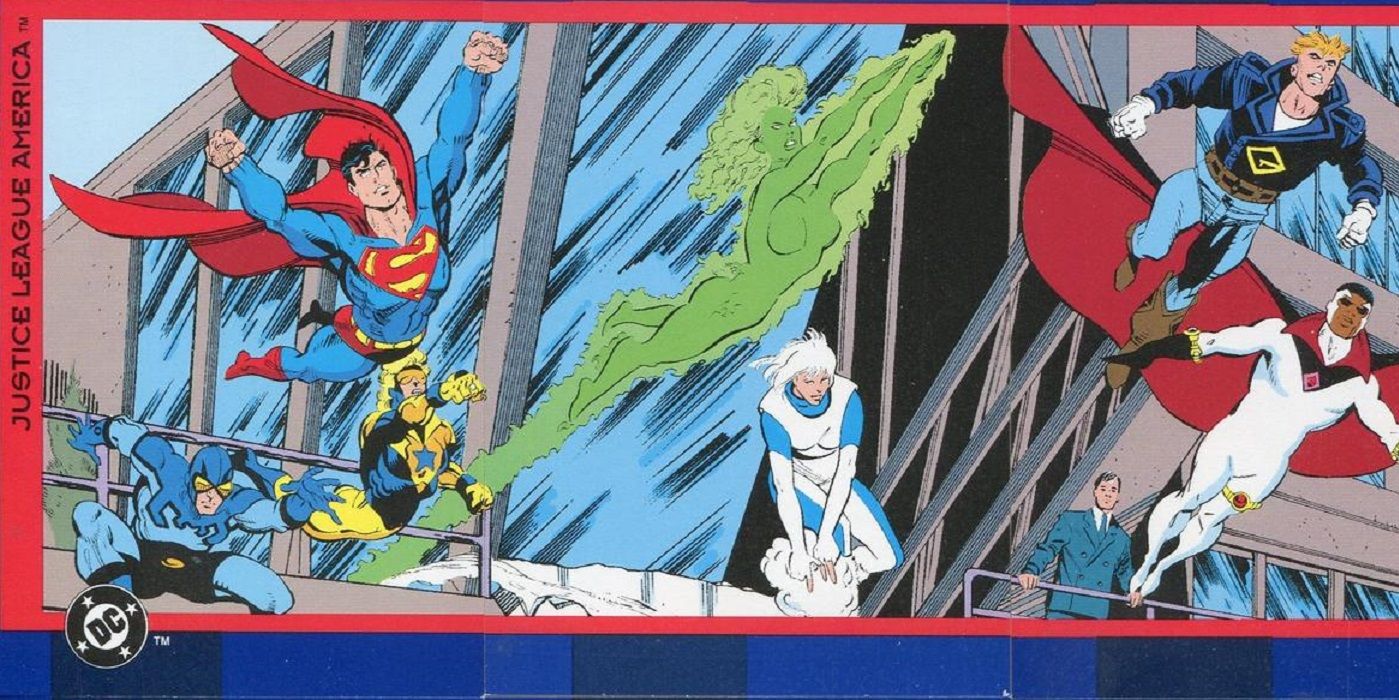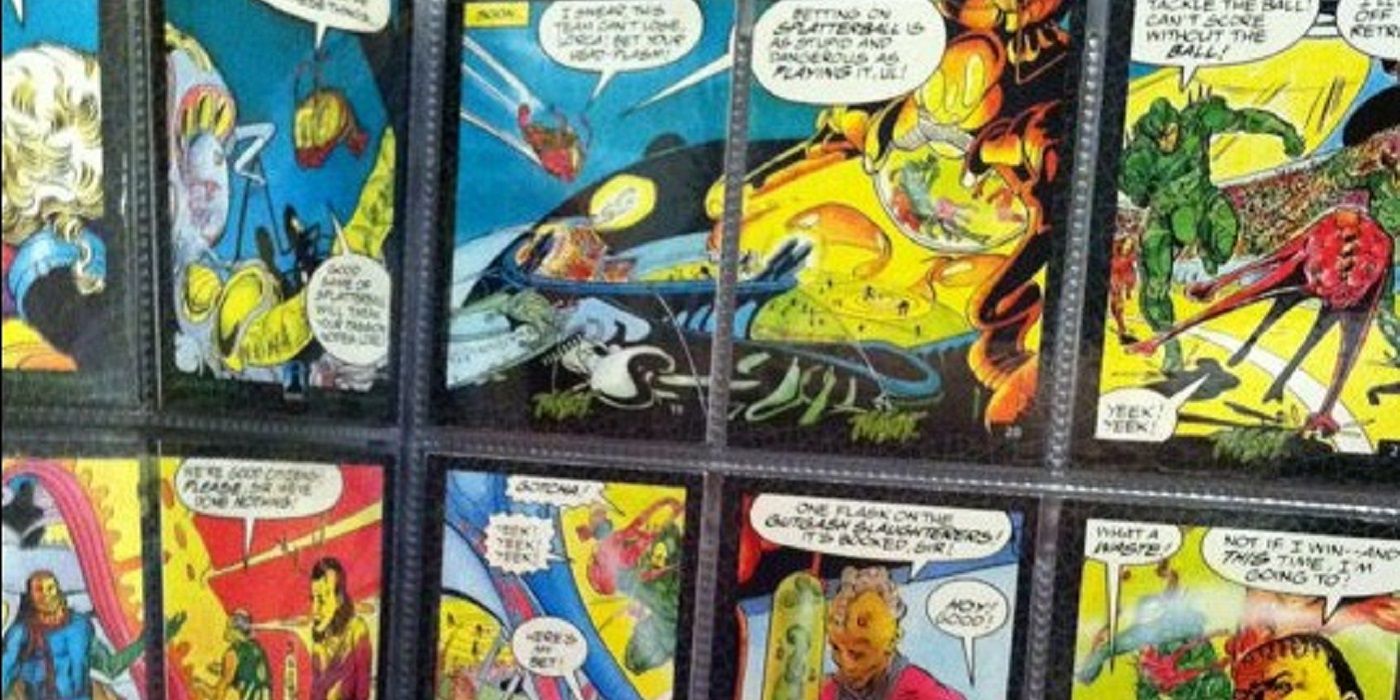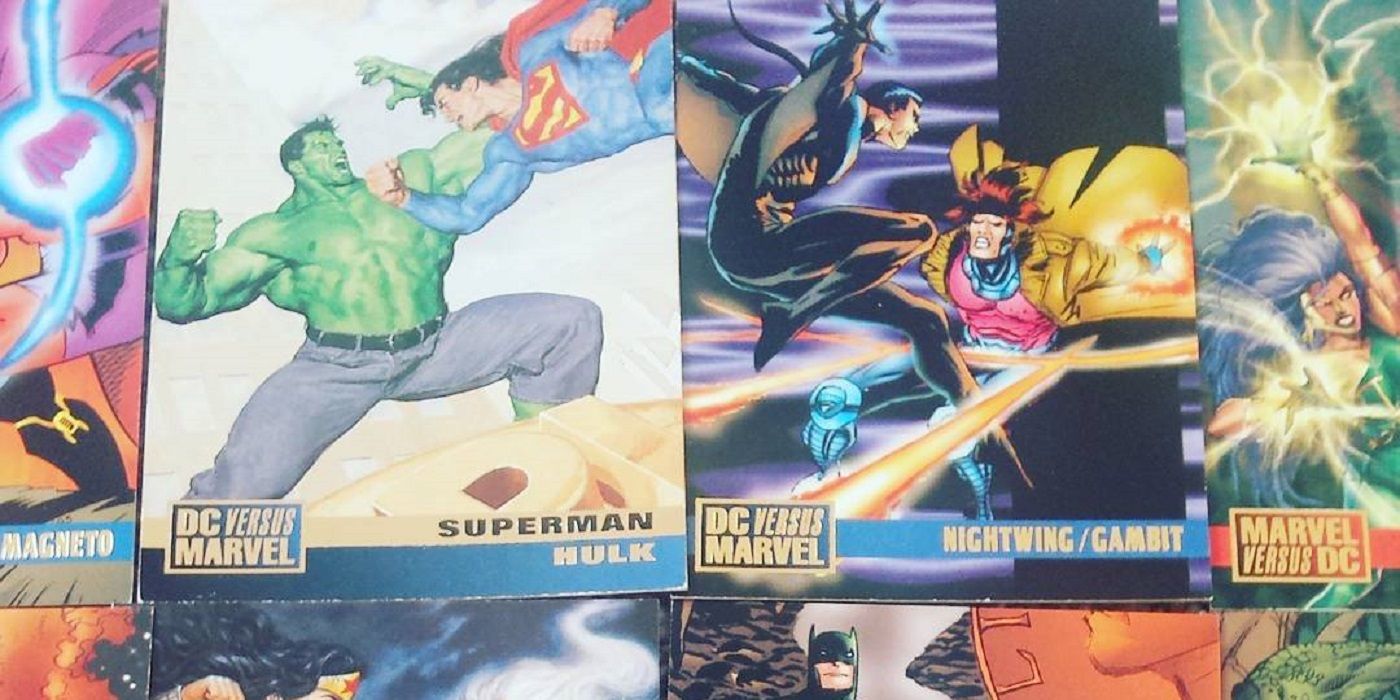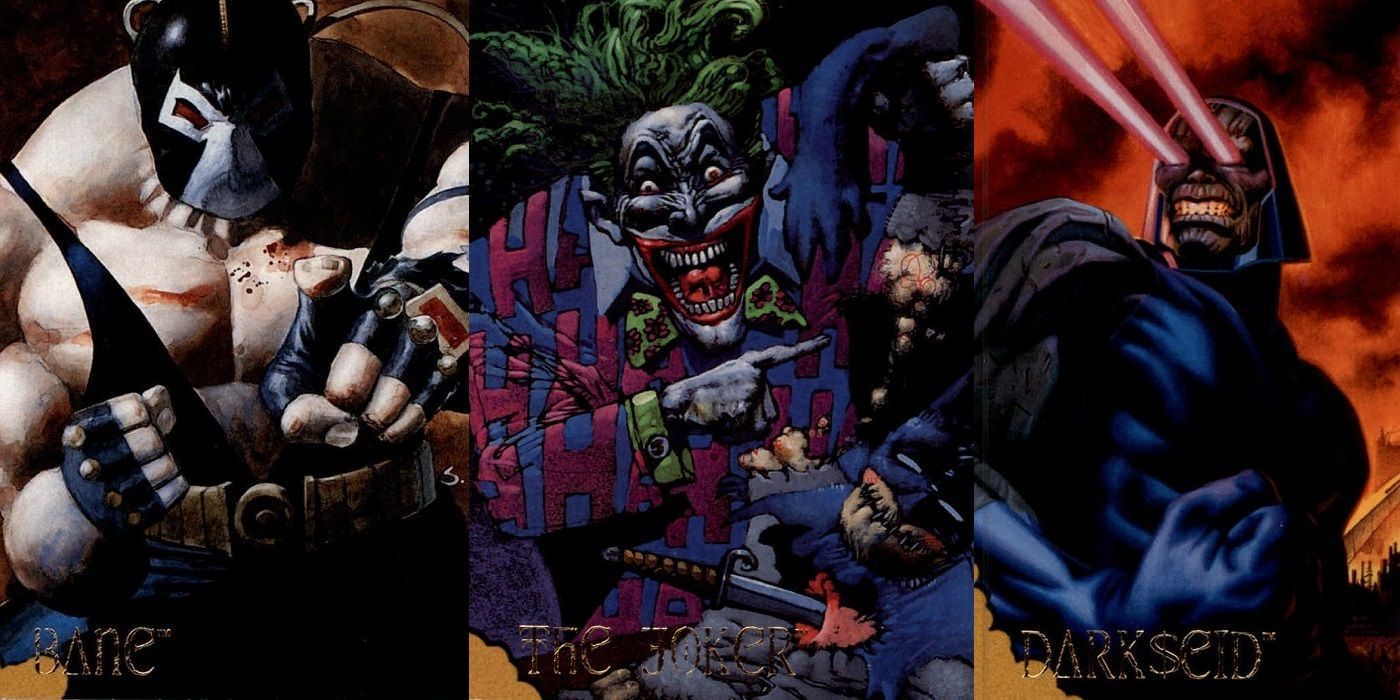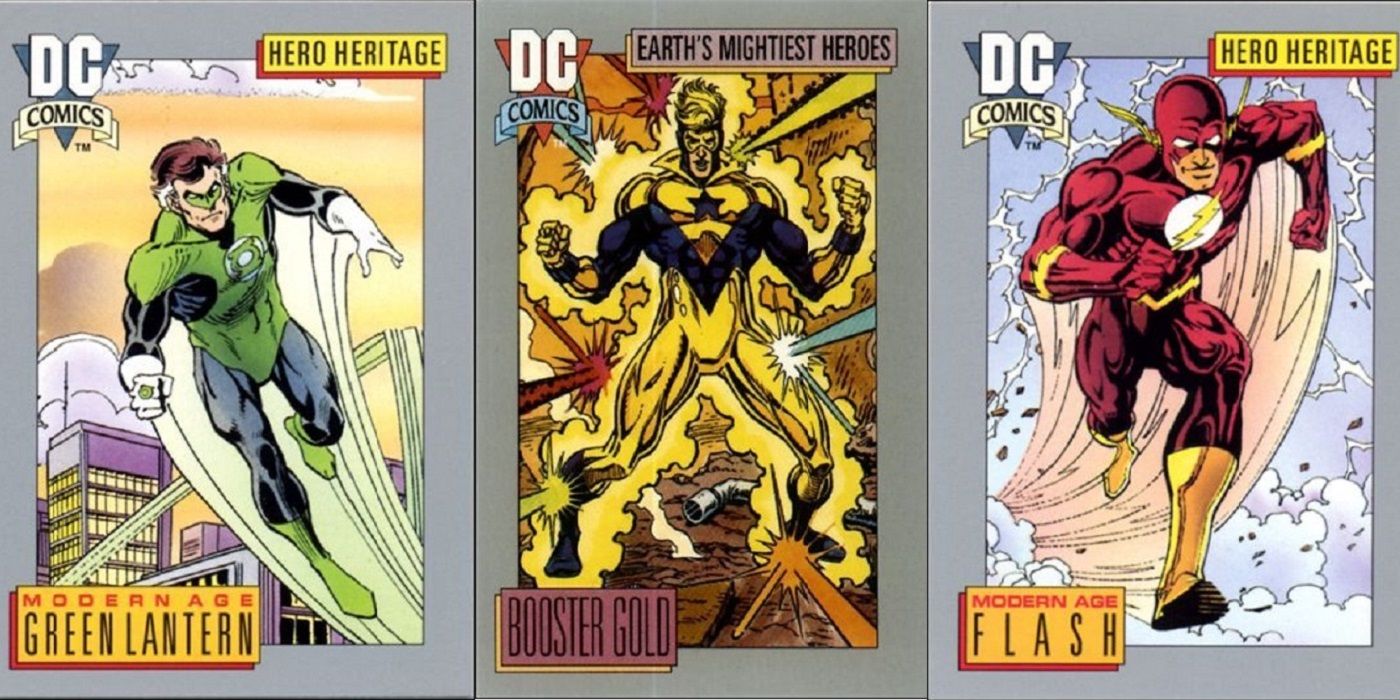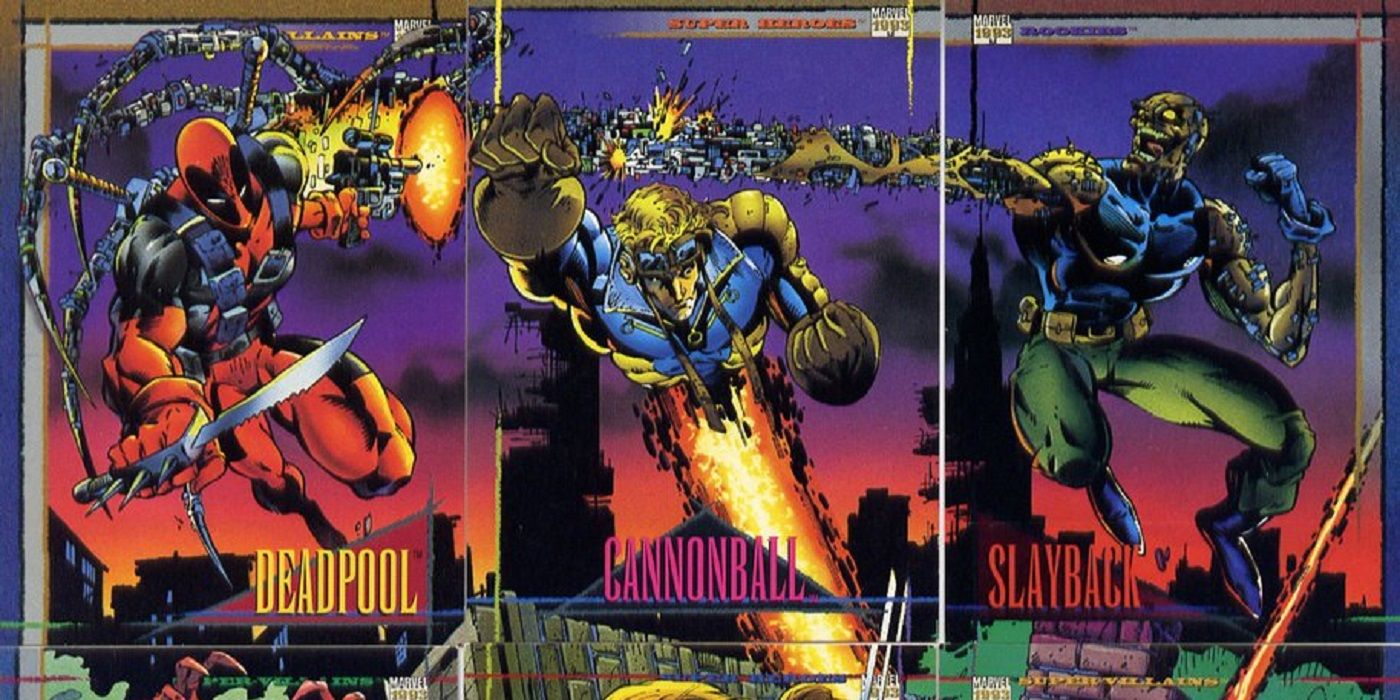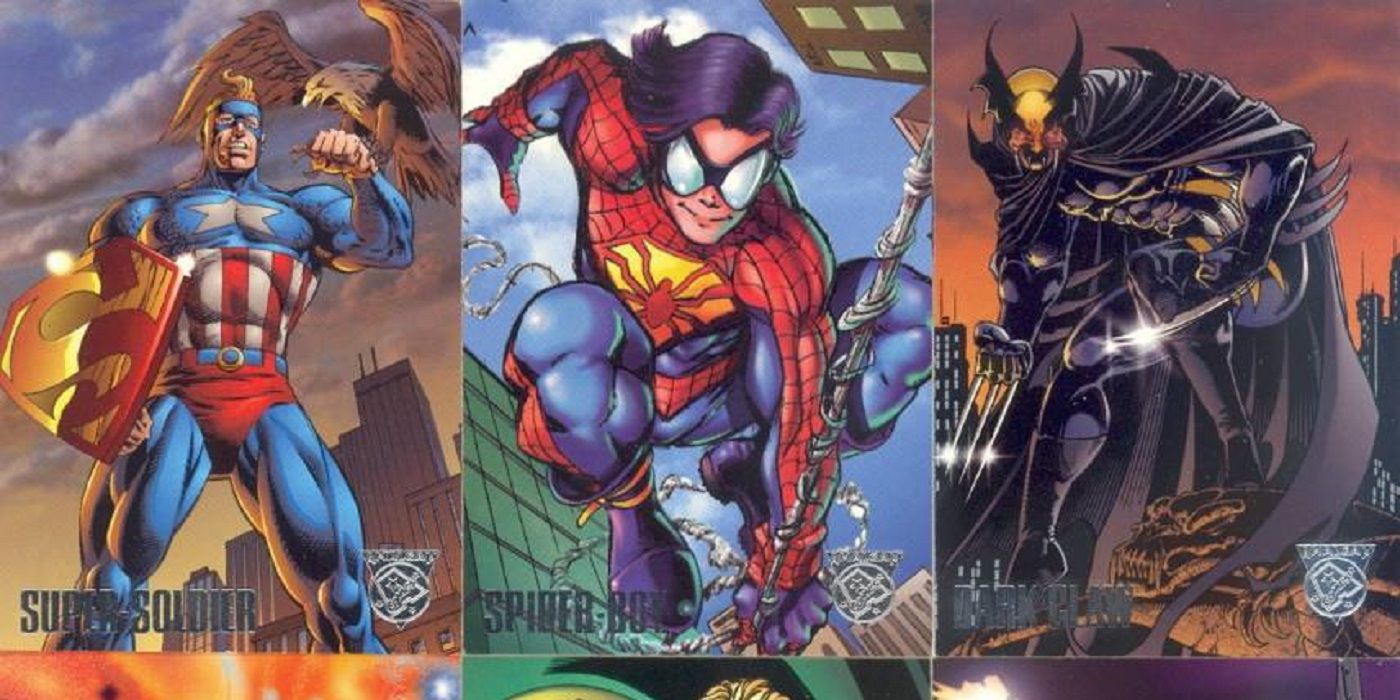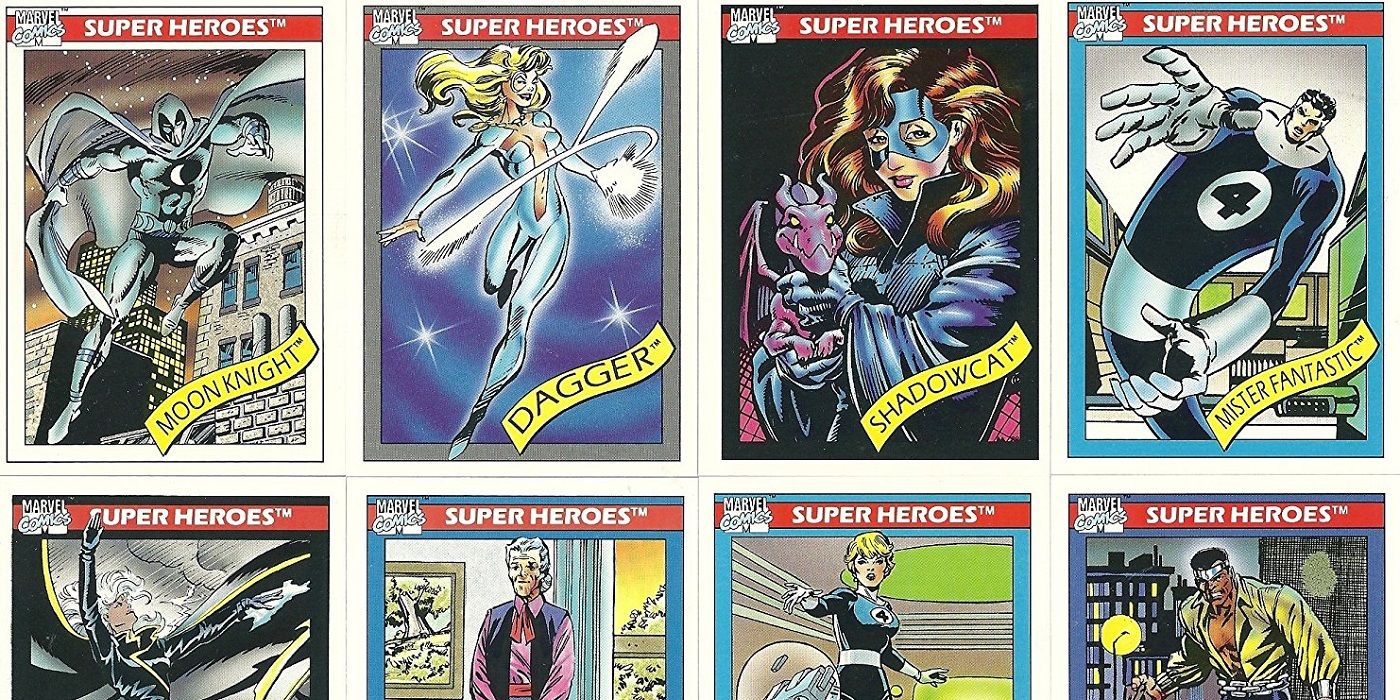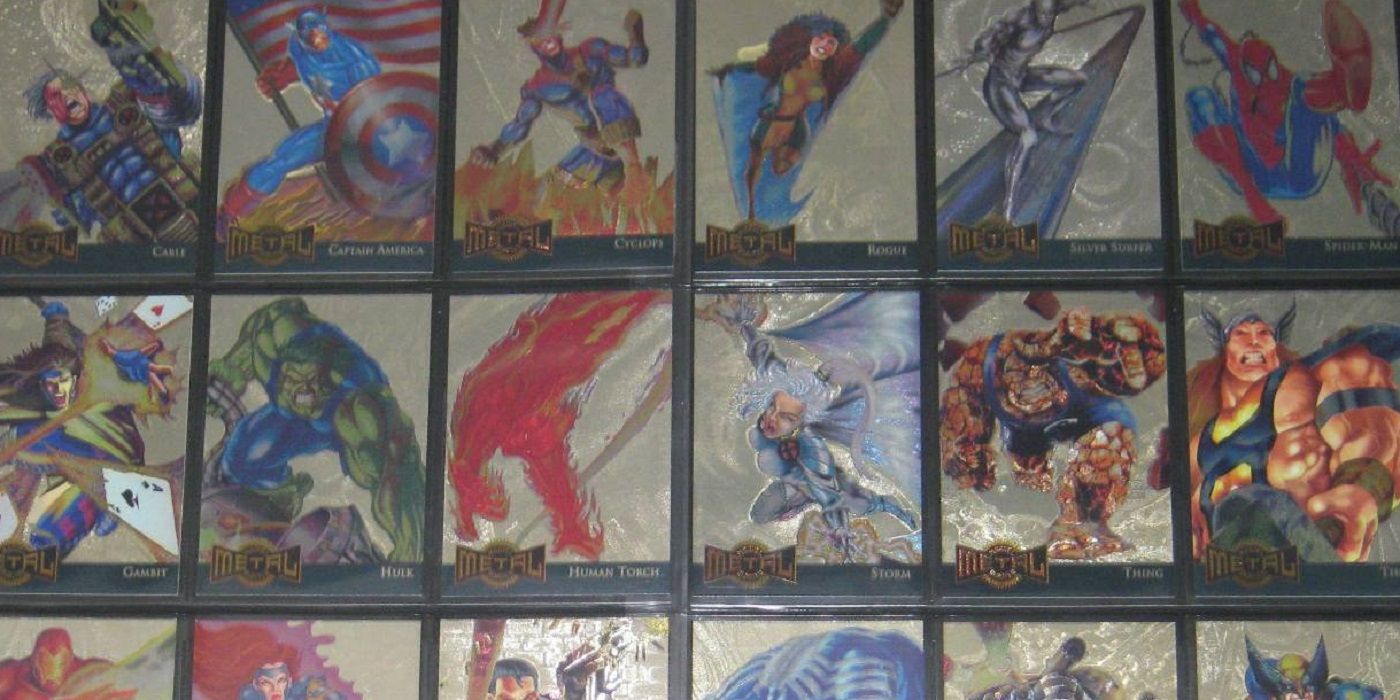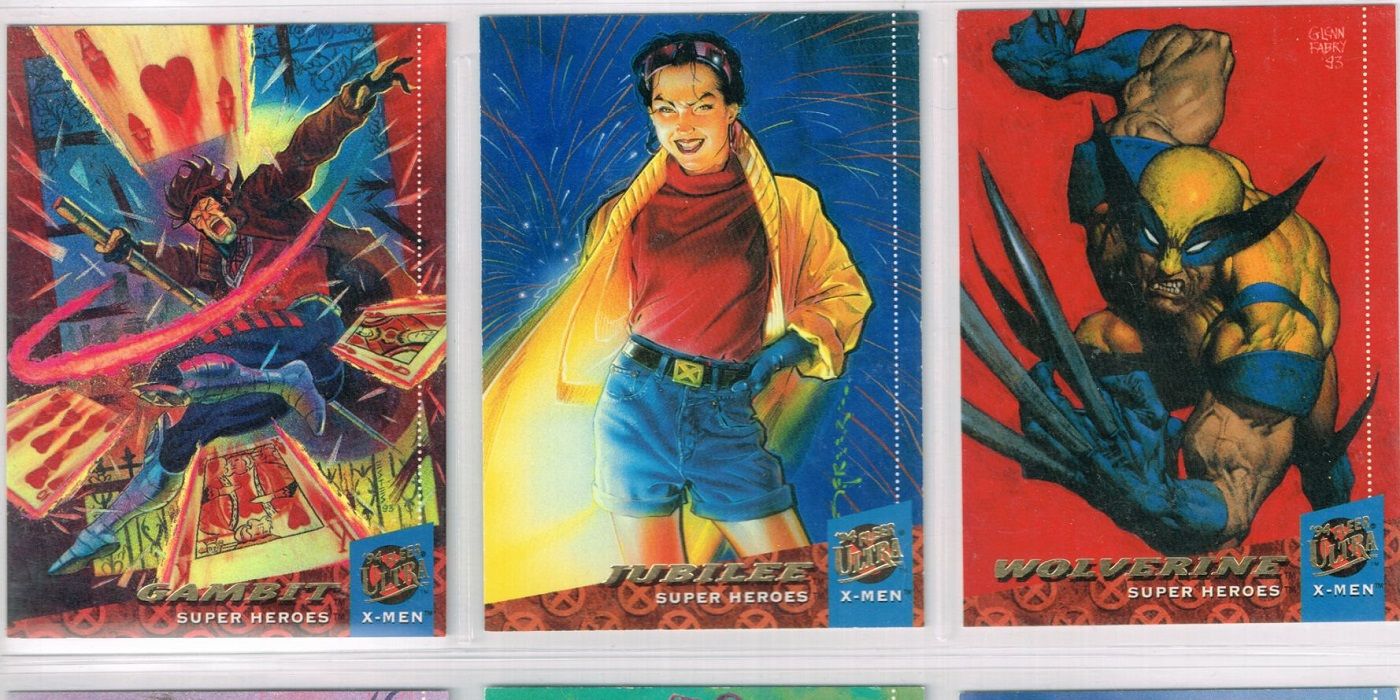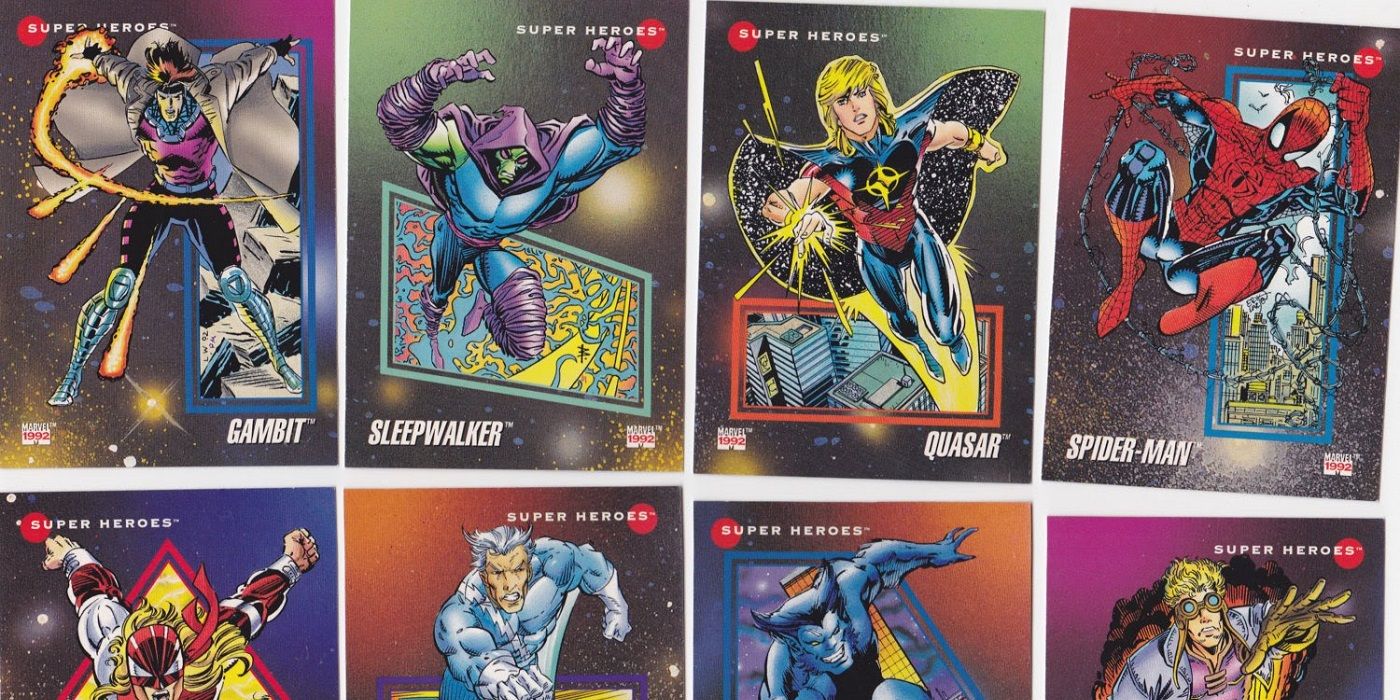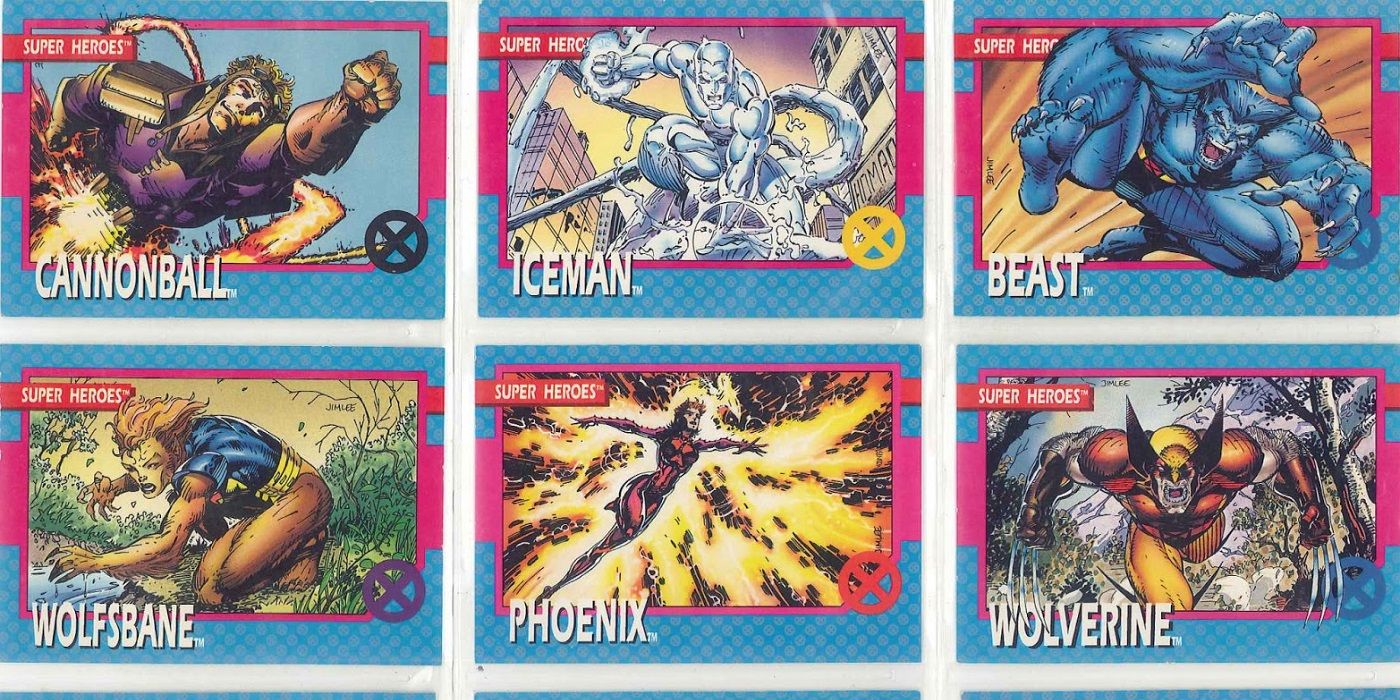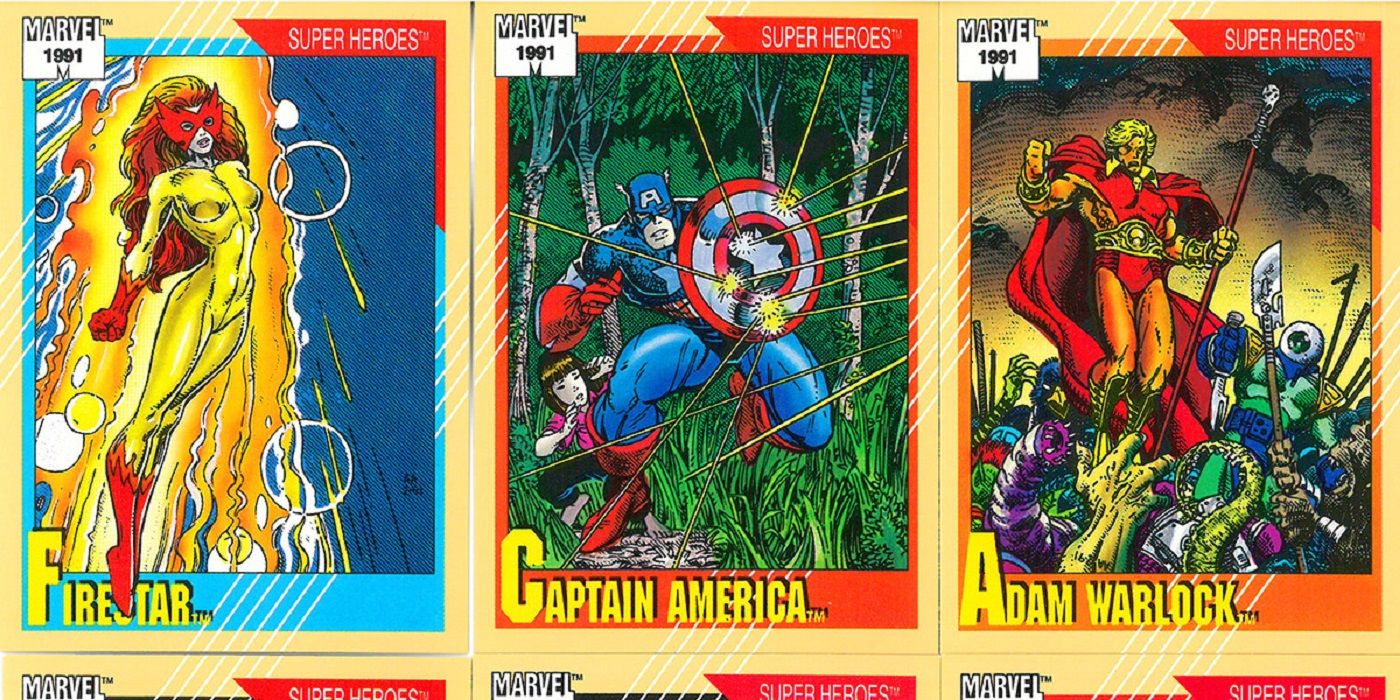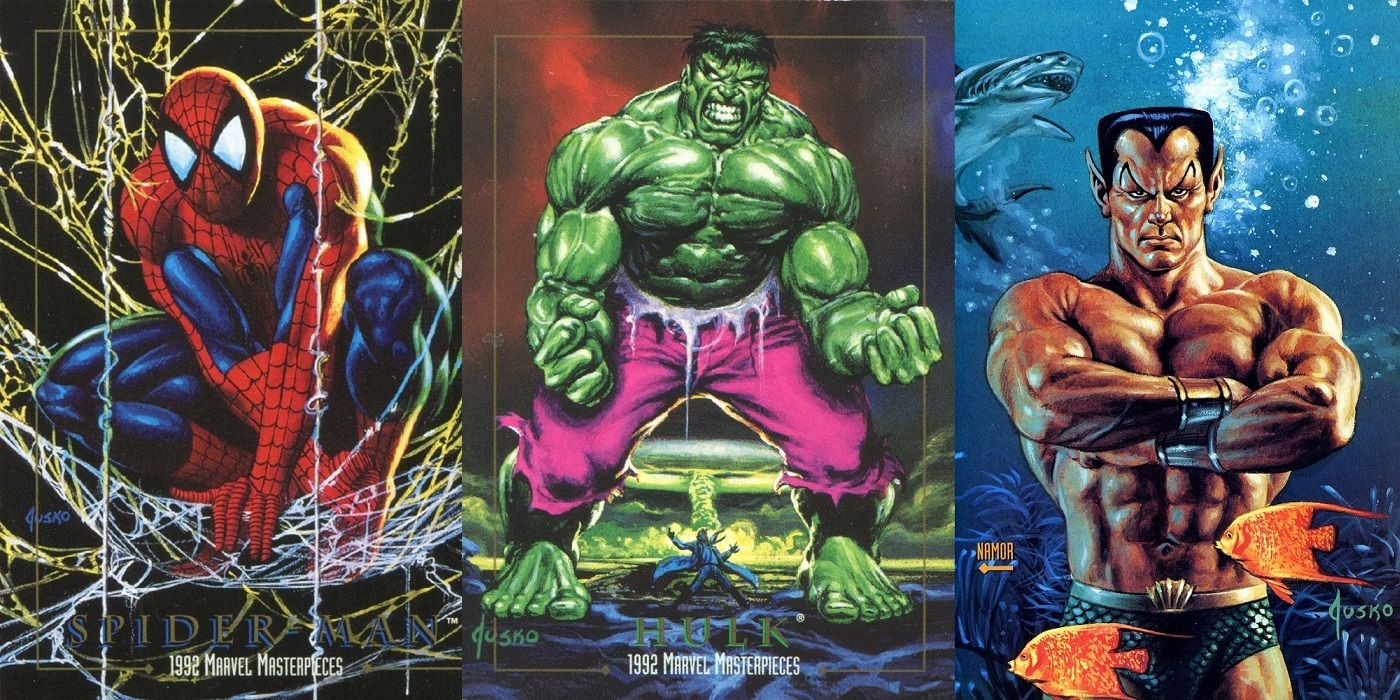The 1990s was a different time. Comic book collecting had become so big that publishers were falling over themselves trying to come up with other ways to monetize their success. They would license their characters to all sorts of products. Meanwhile, though the comic book market was booming, so too was the sports card market, with baseball, basketball, football and hockey cards selling millions. So someone came up with the brilliant idea to mix the two, giving us comic book trading cards!
RELATED: Marvel Trading Cards: 15 Greats From Marvel Universe I
Now, when it comes to ranking comic book trading card sets, it's a tough one, since a lot of times, whenever someone came up with a good idea, they would just duplicate it. Therefore, we're going to try to emphasize sets that were unique from their counterparts, which you would see a lot of in the early days, but then not so much later on when the sets started to get normalized (especially when Marvel purchased one of the big trading card companies). Here, then, are the 15 best comic book trading card sets, ranked from worst to best.
15 THE CREATORS UNIVERSE
The Creators Universe was one of the boldest concepts of the era, but it was also, when all things were said and done, a bit of a fiasco. The concept was simple but brilliant. Approach the top creators in the comic book industry and say, "Create a new character, we will then put it into a set of cards with new characters created by other creators. You will fully own your character and be free to do whatever you want with them and this could be free publicity."
That's a great idea and the set pulled in some huge names, like Joe Quesada, Walter Simonson, Art Adams, Frank Miller, Jae Lee and more, but nearly none of the characters ever actually amounted to anything, and some of them were pretty bad, like Art Thibert clearly just taking his unused Nightwing artwork and creating Nightfire and Starwing from Nightwing and Starfire drawings.
14 COSMIC TEAMS
DC Cosmic Teams was DC's second attempt at a company wide trading card line. The cards featured gorgeous artwork, as they got the regular artists from all the comic book series of the time to then draw the team cards for the series, which were triptychs. Then they had a series of special flashback cards, as well as some "New Breed" cards depicting characters from then new DC comic book series (The Ray, Eclipso, Heckler, etc.).
The problem, as it were, is that it really didn't do much but show you a bunch of team cards. They were cool-looking, but there was nothing much of substance to the set. It is no surprise that this was the last attempt by DC to try a card line just like Marvel's. But hey, at least Bloodwynd got a trading card -- that's something, right?
13 WARRIORS OF PLASM
In the late 1980s, Jim Shooter was pushed out of Marvel after he tried to buy the company and failed. Shooter then shocked the comic book world by successfully launching Valiant Comics...which then also pushed Shooter out. So in 1993, Shooter was on take three with Defiant Comics. Sadly, the company got off to a rough start when Marvel sued them over the name of their first comic book series, Plasm, claiming it was infringed on Marvel's trademark on the Marvel UK title, Plasmer.
Defiant changed its comic to Warriors of Plasm, which launched with a unique approach, a first issue that was made up of a series of trading cards! If you collected all of the cards, you could read a complete debut issue by Jim Shooter and David Lapham!
12 DC VS. MARVEL
DC vs. Marvel was a blast of a series in 1996, but there was at least one notable problem with the series (we said at least one, people who are mad about Wolverine beating Lobo. Chill out!), which is that the series could not possibly contain all of the awesome character match-ups that fans could likely think of.
Luckily, the DC vs. Marvel trading card set helped address that. The 100 card set had half the set be general hero spotlight cards, but then the other 50 were DC vs. Marvel match-ups. Some were from the comic, but the majority were original to just this trading card set!! Some of the match-ups included Archangel/Hawkman, Azrael/Sabretooth, Blue Beetle/Spider-Woman, Deathstroke/Punisher, Human Torch/Firestorm and more! The Ray vs. Nova?! Guy Gardner: Warrior vs War Machine?! So cool! Only 50 cards' worth, but still!
11 DC VILLAINS: DARK JUDGEMENT
As noted, DC Comics really did not acquit themselves too well in the company-wide trading card field, as comic book trading cards was mostly an area dominated by Marvel. Spoiler: Marvel owns the top seven spots on this list, for a very good reason. However, one set that really stood out for DC was 1994's DC Villains: Dark Judgement, which saw the spotlight land on DC's great array of bad guys.
The key thing, though, is that DC had some top notch artists draw these great looking cards, from Bill Sienkiewicz to Kent Williams to Tony Harris to Simon Bisley to Scott Hampton. You'll notice that not only are those all great artists, but they're especially great at drawing dark cards, which was perfect for this set.
10 COSMIC CARDS
Impel was the name of the trading card company that eventually became known as Skybox. The company was truly responsible for breaking the industry into the world of company-wide trading cards with Marvel's in 1990. DC got into the game in 1992 with Cosmic Cards. Cosmic Cards were an interesting idea, as they really played up DC's history, with spotlights on the Golden Age version of a character, the Silver Age version of the character and then the Modern Age version of the character.
However, here's the big rub -- DC had licensed the rights to make Batman trading cards to another company, so the DC company-wide set in 1992 had no Batman or Batman characters in it. Yeah, it is just as dumb as it sounds.
9 MARVEL UNIVERSE (SERIES 4)
The year 1993 constituted a weird time for Marvel, as the success of Image Comics in 1992 led to a mass exodus of its most popular artists. It was almost kind of hilarious, in that those in charge would replace, say, Jim Lee and Whilce Portacio with Art Thibert and Brandon Peterson and, oops, nope, Thibert and Peterson were also gone. Thus, when it came time to do the fourth series of Marvel Universe cards, the artist choices were not the company's top guys.
However, that led to some surprise great artwork, like Joe Madureira drawing the above cards. This set also introduced the concept of nine cards combining to form one big image. It looked cool on an album page together, but each individual card lost a lot of its uniqueness.
8 AMALGAM
In a lot of ways, Amalgam might seem almost like a throwaway set to most collectors, as these sorts of tie-in card sets were usually terrible (can anyone say "Bloodlines"?). This is especially true when you see that there weren't even 100 cards in the set. However, in this case, the first impression is the wrong one.
These cards are great because the backs are filled with continuity information about all of the Amalgam characters; information that was, of course, unique to these cards since these characters only had a handful of appearances each! So, for instance, we learned about Nuke (the combination of Nuke and Bane) when he made his first appearance (Dare the Terminator #232, natch) and more of his background. It's like being in an alternate universe!
7 MARVEL UNIVERSE (SERIES 1)
Modern comic book card sets existed before 1990, but they were mostly artist-driven and they were rather flimsily put together, mostly being reproductions of artwork from comic books. There is a very famous Todd McFarlane set from around this time that is just reworked artwork from McFarlane's comics -- it was still a big deal when it came out.
The 1990 Marvel Universe trading cards changed that, with the first set that was more like a baseball card collection. It was a seismic shift in the way things were done, but at the same time, they were still figuring things out, so the cards aren't as nice as later editions. The backs also have win-loss records that make no sense (Mister Sinister apparently has somehow fought 599 battles, for example). Also, since this wasn't yet a big deal, the artists weren't as impressive as later sets.
6 MARVEL METAL (SERIES 1)
Generally speaking, the more bells and whistles that got involved in comic book trading card sets, the worse that they got. They just started to look ridiculous more than anything else. That said, in the early goings, some of these new bells and whistles worked really well.
A perfect example of a set where the special effects worked nicely for the cards was the 1995 Marvel Metal series, which used foil to make the cards really stand out. The artists on the cards weren't necessarily the cream of the crop for the era (and man, the costumes were of the era, so they're pretty fugly), but the overall design of the set is great. Just don't go too far with this particular subset, as the later years get really garish.
5 X-MEN FLEER ULTRA (SERIES 1)
Here's how popular trading cards were for comic book companies. They were so big that Marvel decided to go out and just buy its own trading card company in 1994 to make its own cards, rather than outsourcing them to Impel/Skybox (Marvel would actually eventually buy Skybox, as well, to form Fleer/Skybox. Fleer was doing so well that Bill Jemas, an executive high up at Fleer, ended up being put in charge of Marvel's comic book line after Marvel got out of bankruptcy in the late 1990s.
In any event, the first major Fleer set for Marvel was the Fleer Ultra version for X-Men, which were just gorgeous looking cards. The high-end cards really served the characters well. There were special foil etched cards, as well. There were four different X-Men Fleer Ultra series, but nothing beats the first one.
4 MARVEL UNIVERSE (SERIES 3)
1992 was the last year that Marvel had access to a generally-wide variety of comic book artists for their trading cards, including Erik Larsen doing his second Spider-Man card (although, they probably had to lean a bit too much on Ron Lim for the series. Not that Lim is bad, but there seemed to be an inordinate amount of Lim-drawn cards). The card designs for these Marvel cards are striking, with an interesting shaped background to the cards that some artists used really well (the ones who would incorporate the shape into the design, like having Punisher firing from a circle).
The backs of the card went landscape, which was annoying, since there was less room for information. In general, though, this was the last great Marvel Universe regular series. There's a hilarious in hindsight series of cards dealing with mysteries of the era, like "What's Wolverine's origin?" or, the eternal question everyone is dying to know, "What does Darkhawk look like underneath his mask?"
3 X-MEN (SERIES 1)
You know that you have an iconic card set when Marvel literally took the artwork from these cards and used them as a series of special variants... 25 years after the set came out! Yes, Jim Lee's amazing artwork is as popular today as it was when he drew this X-Men series of cards in 1992.
There actually was a Jim Lee X-Men set in 1991, but it was just the old school comic book card set, with drawings taken from X-Men comics on the front and then a description of the action on the back. Sort of like seeing the history of Claremont and Lee's run in trading card form. These X-Men cards had a lot more information on the back, including statistics and "fun facts" about the characters. Did you know that Wolverine fought the Hulk on his first mission? Yes, that was actually his fun fact.
2 MARVEL UNIVERSE (SERIES 2)
After the massive success of the first series, 1991 saw the most classic edition of the Marvel Universe trading cards and arguably its most popular of all time. This time around, nearly all of Marvel's top artists got in on the action -- Art Adams drew some cards in the first series, but he drew a bunch of cards in the second one. Artists taking part in producing these cards also included Jim Lee and Erik Larsen, who of course drew Spider-Man.
These cards also introduced, for the first time, statistics, which a whole generation of fans absorbed like they were infallible gospel. "Nuh uh, Spider-Man's faster than Gambit! The card says so!" Bam, argument finished. This is clearly the iconic comic book card set of the early 1990s, and will absolutely stir some feelings in fans from the time.
1 MARVEL MASTERPIECES (SERIES 1)
While Marvel Universe (Series 2) is the most iconic comic book trading card set of the 1990s, the best has got to be Marvel Masterpieces in 1992. The whole set features painted artwork by the great Joe Jusko. It is a gorgeous set. G-o-r-g-e-o-u-s. This set was so beautiful-looking that Marvel literally printed a miniseries that consisted entirely of just enlarging the cards so that each card would take up one page of the comic book. That's how popular this set was.
The later Marvel Masterpieces sets were good looking as well, but this one was just leaps and bounds above them all. The problem, though, was that this was now the second regular series of cards for Marvel, and Fleer Ultra would soon make three and that's asking for fans to buy a whole lot of cards every year. This was the beginning of the end.
We know that you have your own favorites! Let us know what you think should be ranked #1!

